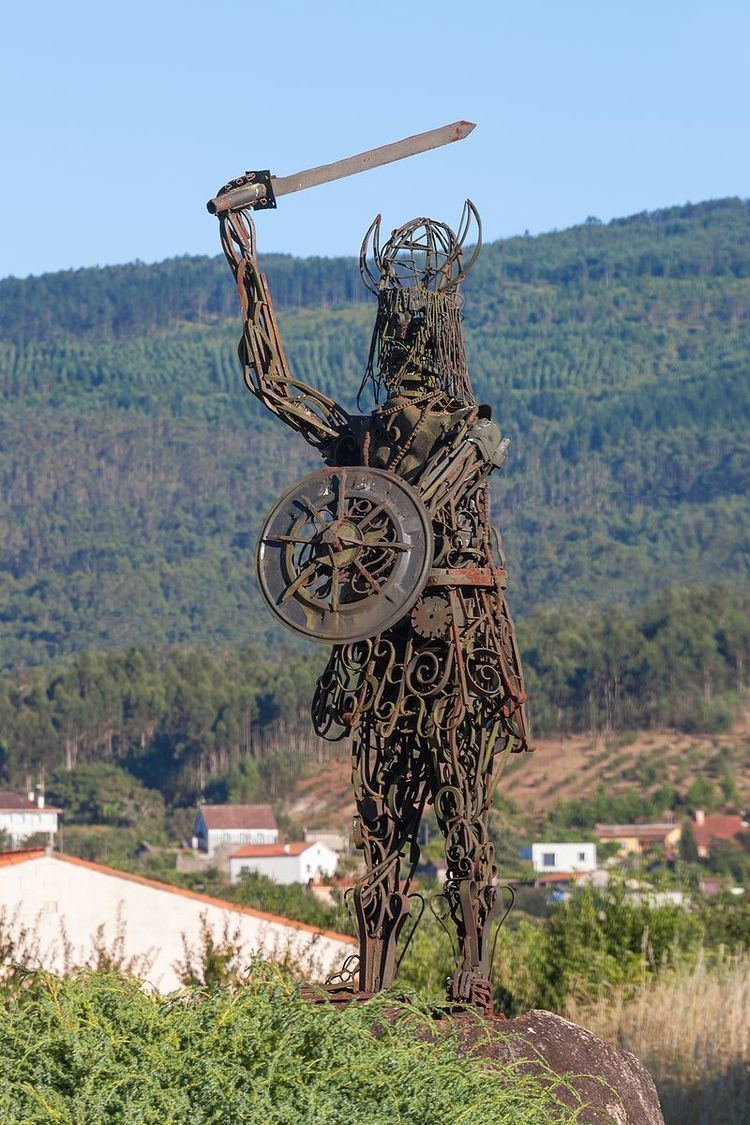Location Galicia, Spain | ||
 | ||
Irene garcia losquino vikings in galicia
The presence of Vikings in Galicia took place between the ninth and twelfth century, when Vikings from Scandinavia were a naval and military power, launching expeditions of plunder and conquest by the Atlantic coast and European rivers, looting cities and settlements. The Vikings extended their journeys all the way to the Mediterranean Sea and the Black Sea, and on the way they raided Galicia. In contemporary texts, the Vikings are often referred to as normandos or lordimani.
Contents
Our knowledge of Vikings in Spain is mainly based on written accounts. There are archeological findings of anchors of Viking ships, and some shapes of mounds by riversides look similar to the Norse longphorts in Ireland. These were ports or docks for Viking longships.
First invasion
The first incursion of the Vikings in Galicia is mentioned in Annales Bertiniani, and dated August 844, when a group from a plundering expedition entered the Garonne and reached Galicia pushed by a storm. After plundering a number of coastal villages they were ultimately repulsed in the vicinity of Farum Brecantium i.e., the Tower of Hercules (called by them FAR). Ramiro I of Asturias who was king of Asturias at the time, gathered troops in Galicia and Asturia for the counter-attack. After the Asturian victory, the Vikings continued their voyage in direction of Lisbon.
A legend also explains that when the Vikings arrived at the mouth of the river Masma, the holy Bishop of the diocese of Gonzalo Bretoña prayed for protection from the heavens against the forthcoming attack. A major storm was unleashed, sinking most of the fleet and a large number of Vikings fled in their ships.
Second invasion
Vikings returned to Galicia in 859, during the reign of Ordoño I of Asturias. It was a contingent of a hundred ships from looting expeditions by the French coast that was now directed toward the Arousa estuary. After looting Iria Flavia they continued to Santiago de Compostela, where they laid siege. Their neighbours had paid tribute to avoid looting, but in spite of this, the Vikings tried to enter the city. They were faced with an army led by Don Pedro who dispersed them and destroyed thirty eight of their ships; after which the surviving Vikings went south. As a result of this expedition the episcopal see of Iria relocated to Santiago de Compostela.
Later invasions
In 951, the Vikings reappeared and attacked the Galician coast. Galician cities would then strengthen their defenses over the following years. In 964, the Vikings arrived again in Galicia, because the own bishop of Mondonedo, Rosendo of Celanova, they had to face.
The expedition of 1015 was led by Olaf Haraldsson, who later became king Olaf II of Norway. He destroyed four settlements: Castropol, Betanzos, Rivas de Sil and Tui.
